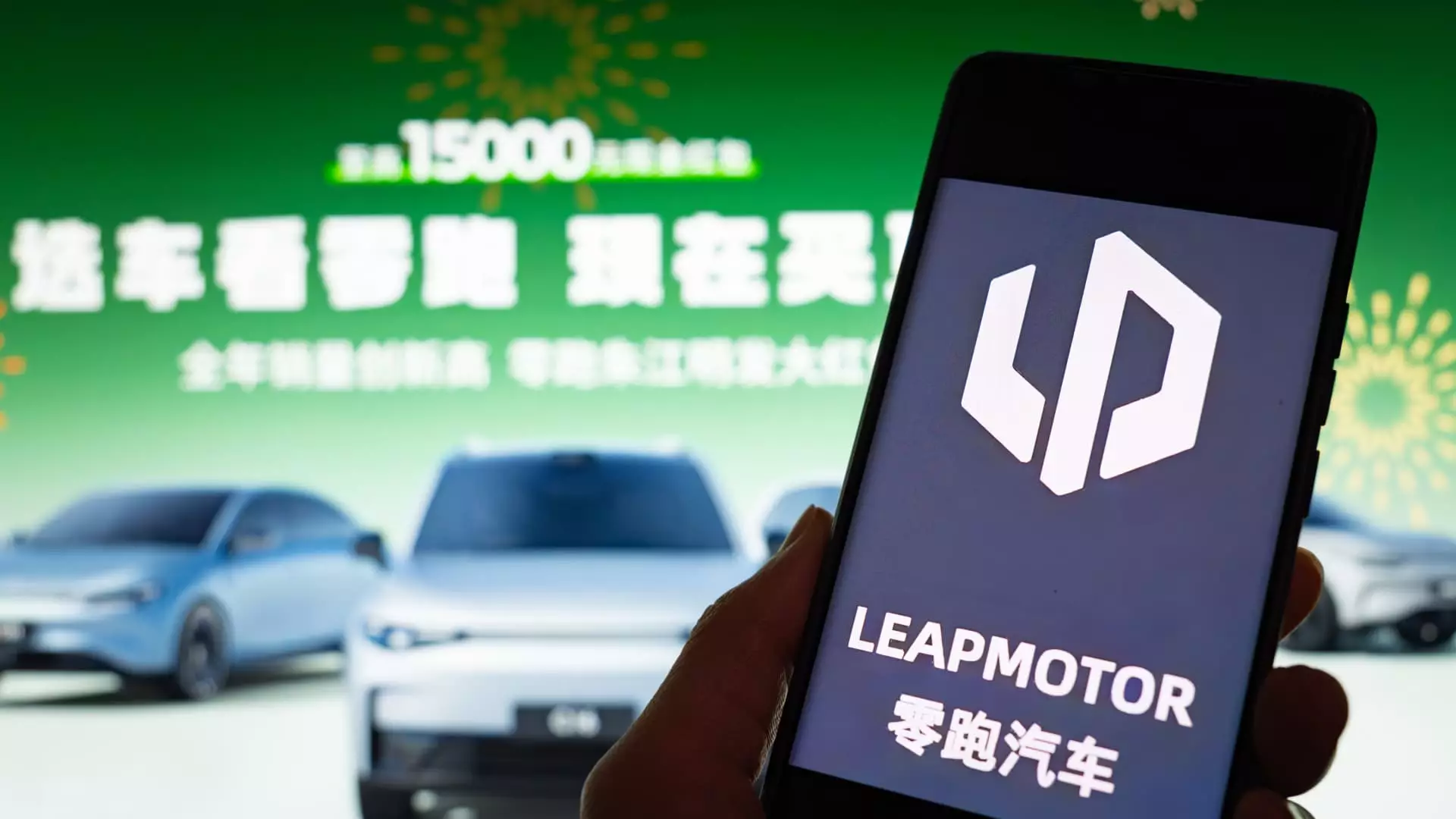China’s electric vehicle (EV) market is witnessing seismic shifts, as the entry of ambitious automakers like Leapmotor and Aito signals a new era of competitive dynamics. While established giants such as BYD continue to dominate, recent reports from May indicate that several upstart companies have begun to carve out substantial niches for themselves. Leapmotor, powered by Stellantis, has made headlines with its record-breaking delivery figures of 45,067 units—a staggering 148% increase compared to the same month last year. This kind of explosive growth raises questions about the sustainability of such rapid expansion in an increasingly cutthroat market.
Innovation and Affordability Combine
At the forefront of Leapmotor’s success is the launch of its updated C10 model—a mid-sized SUV that retails at a competitive price of 122,800 yuan (approximately $17,045). The company reported that over 13,000 units of the C10 were sold in May alone, demonstrating the effectiveness of their pricing strategy coupled with innovative technology. This blend of affordability and advanced features resonates with consumers, a strategy that other budding automakers would do well to emulate.
Meanwhile, Aito, leveraging technology developed by Huawei, registered a strong showing with 44,454 vehicles delivered in May. Their latest offering, the Maextro S800, reflects a distinct focus on luxury, priced at 708,000 yuan. This focus on the high-end segment contrasts sharply with Leapmotor’s strategy, highlighting the diverse consumer preferences in the EV market. As newer players seek to capture market and mind share, such diversification in product offerings might be the key to survival.
BYD: A Behemoth in the Room
Despite the impressive numbers from emerging manufacturers, BYD remains an unassailable giant in the sector, boasting 376,930 car sales in May. Yet, the company is not without its troubles. Recent price cuts across 22 of its models—aiming to retain competitive pricing—have raised eyebrows and affected share prices across the industry. BYD’s aggressive pricing tactics resemble the tactics of traditional automotive pricing wars, which could alienate consumers looking for stability amid fluctuating markets.
With some analysts drawing parallels to the Evergrande crisis, concerns mount about the sustainability of such aggressive competition. The dynamics could usher in a future punctuated by bankruptcies and consolidations, similar to what disrupted the real estate sector in China.
Struggles of Other Startups
While Leapmotor and Aito shine, other players like Xpeng and Li Auto display varying degrees of performance. Xpeng’s deliveries dipped slightly, from 35,045 in April to 33,525 in May, although a year-on-year increase of 230% indicates substantial growth potential. The introduction of innovative models like the Mona M03 Max speaks to their commitment to diversify, yet it raises questions about their ability to capture sustainable market share amid intensifying competition.
Li Auto, too, grapples with a modest growth rate of 16.7%, delivering 40,856 vehicles in May. Meanwhile, other brands like Geely-owned Zeekr and Nio face unique challenges, such as Zeekr’s minimal growth despite the introduction of free driver-assistance technology, and Nio’s waning sales, which fell from the previous month despite a respectable year-on-year growth.
Looking Beyond Borders
As market pressures intensify, many Chinese automakers are eyeing expansion beyond domestic shores, a trend indicative of their desire to tap into emerging markets. The ongoing tariffs imposed by the European Union and the U.S. pose significant barriers, prompting companies to consider markets in Africa and Southeast Asia, as reported by the South China Morning Post. This geographic diversification may prove vital not only for growth but also for building resilience against shifting geopolitical landscapes.
The race for dominance in China’s EV market is a multifaceted challenge that intertwines innovation, pricing strategies, and geographical considerations. As new players like Leapmotor and Aito ascend, traditional giants such as BYD must navigate a maze of competitive threats, challenging their long-held supremacy. The coming months will surely test the mettle of all participants in this dynamic industry, with a spotlight on how each company adapts and evolves in response to the pressures of a rapidly changing marketplace.


Leave a Reply